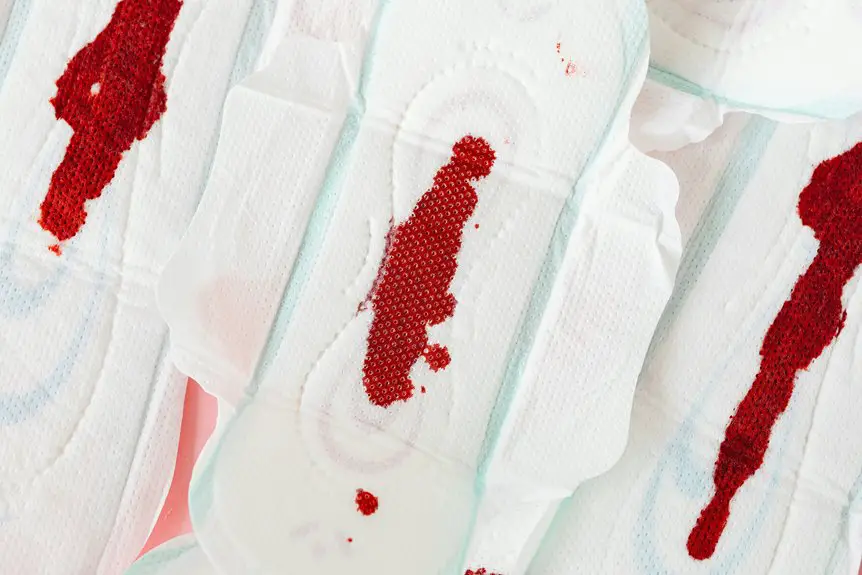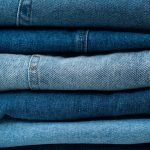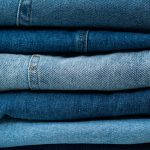Natural dyes tend to bleed more due to their unique binding properties, influenced by dye quality, fabric type, and the pH of the dye bath. If the dye doesn’t bond well, it can wash out easily. To control bleeding, use appropriate mordants for fixation, maintain proper pH levels, and wash fabrics with mild detergents. Cold water washing and air drying away from sunlight can also help. There’s more to discover about achieving vibrant and long-lasting colors!
Table of Contents
Key Takeaways
- Natural dyes bleed more due to weak binding to fabric, often influenced by the quality of the dye used.
- The pH level of the dye bath affects the dye’s bond; pH extremes can lead to increased bleeding.
- Using improper fixation techniques, such as inadequate mordanting, can result in dyes that wash out easily.
- Harsh washing practices, like using strong detergents, exacerbate dye bleeding during laundry.
- Pre-soaking fabrics in vinegar-water and washing with cold, mild detergents can help control dye bleeding effectively.
Understanding Natural Dye Characteristics
When you explore natural dyes, it’s essential to understand their unique characteristics, as these attributes can greatly impact your dyeing projects. Each natural dye comes from specific plant materials, insects, or minerals, influencing the final color and its permanence.
For instance, some dyes produce vibrant hues but may fade quickly, while others yield softer shades with lasting power. You should also consider factors like lightfastness and washfastness, which describe how well the dye resists fading in sunlight or during washing.
Additionally, the pH level of your dye bath can alter the color outcome. By knowing these characteristics, you’ll make informed choices that enhance your dyeing experience and achieve the desired results in your projects.
Factors Contributing to Dye Bleeding
Although natural dyes offer beautiful, unique colors, several factors can lead to dye bleeding, which can ruin your projects.
One major factor is the quality of the dye itself; impurities or inconsistencies can affect how well the dye binds to the fabric. Additionally, the type of fabric you use plays an essential role; some fibers absorb dyes better than others, impacting their colorfastness.
The quality of the dye and fabric type significantly influence dye binding and colorfastness.
The pH level of your dye bath can also influence bleeding; inappropriate levels may weaken the bond. Moreover, improper fixation techniques can leave dyes vulnerable to washing or exposure to moisture.
Finally, washing practices, like using harsh detergents or hot water, can exacerbate dye bleeding, so choose your methods wisely to maintain your vibrant colors.
The Role of Climate and Soil in Dye Quality
The quality of natural dyes is greatly influenced by the climate and soil conditions where the dye plants are cultivated.
You’ll find that factors like temperature, humidity, and rainfall can affect the concentration of dye compounds in the plants. For instance, warmer climates may enhance the growth and yield of dye plants, leading to richer colors.
On the other hand, poor soil quality can limit nutrient availability, affecting the plants’ overall health and dye potency. Soil pH also plays a role; certain plants thrive in acidic or alkaline conditions, which can impact the dye’s vibrancy.
The Importance of Proper Fixation
When working with natural dyes, proper fixation is essential for achieving vibrant, long-lasting colors.
You need to understand various fixation techniques and the role of mordants to guarantee your dyes don’t bleed.
Fixation Techniques Explained
Proper fixation is essential for guaranteeing that natural dyes retain their vibrant colors over time. To achieve effective fixation, you can use various techniques.
One common method involves pre-treating your fabric with a mordant, which helps bind the dye to the fibers. Common mordants include alum, iron, and tannin.
You can also employ heat-setting by steaming or ironing your dyed fabric, which further enhances color retention. Additionally, using a fixative solution after dyeing can help lock in colors.
Always remember to thoroughly rinse your dyed fabric after fixation to remove excess dye. By employing these techniques, you’ll markedly reduce bleeding and guarantee that your creations maintain their beautiful hues for longer.
Effects on Colorfastness
Without effective fixation techniques, the vibrant colors of natural dyes can quickly fade or bleed, diminishing the beauty of your fabric.
To maintain colorfastness, you need to focus on proper fixation methods that lock in those stunning hues. Here are some key points to contemplate:
- Choose the Right Fixative: Different dyes require specific fixatives to bond effectively with the fibers.
- Follow Application Instructions: Verify you’re applying the fixative according to the guidelines, as improper use can lead to poor results.
- Test for Colorfastness: Always perform a test before dyeing large pieces to see how well the color holds up after washing.
Importance of Mordants
Although many may overlook them, mordants play an essential role in ensuring the longevity and vibrancy of natural dyes on fabric. These chemical agents bind the dye to the fibers, enhancing color stability and preventing bleeding during washing.
Without proper mordanting, your beautifully dyed garments might fade quickly or bleed onto other fabrics, ruining your projects.
When you choose a mordant, consider its compatibility with the dye and fabric type. Common mordants include alum, tannin, and iron, each offering different effects on the final color.
To get the best results, always follow recommended ratios and application techniques. By using mordants correctly, you’ll not only achieve stunning colors but also extend the life of your dyed textiles, keeping them vibrant for years to come.
Using Mordants for Enhanced Colorfastness
When you want to achieve vibrant, long-lasting colors with natural dyes, using mordants is key.
You’ll find various types of mordants and application techniques that can enhance your dyeing results.
Understanding the benefits of mordanting will help you make informed choices for your projects.
Types of Mordants
Mordants play an essential role in the world of natural dyes, enhancing colorfastness and ensuring vibrant hues remain true over time.
By acting as a bridge between the dye and the fiber, they help lock in color. You’ll find several types of mordants, each with unique properties:
- Alum: A common choice, it’s safe and effective for most fibers, yielding bright colors.
- Iron: Known for deepening shades and creating earthy tones, it can also darken lighter colors.
- Tannins: Plant-derived, they enhance color intensity and can be used as a pre-mordant for better results.
Choosing the right mordant for your dyeing project will greatly impact the final outcome, so consider what best suits your needs!
Application Techniques
How do you guarantee that your colors remain vibrant and true over time? One effective way is by using mordants during your dyeing process.
Mordants are essential for binding natural dyes to your fabric, enhancing colorfastness. When applying mordants, you’ll want to pre-soak your fabric in a mordant solution before dyeing. This prepares the fibers to absorb the dye more effectively.
Make certain to follow the recommended ratios of mordant to fabric weight for ideal results. After dyeing, rinse your fabric in cold water to help set the color.
Benefits of Mordanting
While you may enjoy the vibrant hues of natural dyes, using mordants can greatly enhance their longevity and overall appearance.
By applying mordants, you’ll notice several key benefits that improve your dyeing experience:
- Increased Colorfastness: Mordants help the dye bond with the fibers, reducing the chances of fading or bleeding during washing.
- Enhanced Vibrancy: They can intensify the colors, making your fabrics look richer and more saturated.
- Expanded Color Palette: Different mordants can produce varying shades from the same dye, giving you more creative options.
Incorporating mordants into your dyeing process not only guarantees your results last longer but also elevates the beauty of your dyed materials.
Embrace this technique for stunning, durable creations!
Ph Balance and Its Impact on Dyes
The pH balance of a dyeing solution plays a crucial role in determining how well natural dyes adhere to fabrics. A solution that’s too acidic or too alkaline can cause the dye to lose its vibrancy and bleed more easily. Understanding the pH levels can help you control the outcome of your dyeing process.
| pH Level | Effect on Dyeing |
|---|---|
| 3-4 | Enhanced brightness |
| 5-6 | Ideal adhesion |
| 7 | Neutral, may lead to fading |
| 8-9 | Dull colors, excess bleeding |
| 10+ | Significant color loss |
Effective Cleaning Techniques to Minimize Bleeding
To minimize bleeding in natural dyes, it’s essential to adopt effective cleaning techniques that preserve color integrity. Start by using cold water when washing dyed fabrics, as hot water can trigger dye release.
To preserve the vibrant colors of naturally dyed fabrics, always wash them in cold water to prevent dye bleeding.
Here are some additional tips to help you maintain your vibrant colors:
- Mild Detergents: Use gentle, pH-balanced detergents specifically formulated for delicate fabrics. Harsh chemicals can strip dyes.
- Pre-soak: Consider pre-soaking your fabrics in a vinegar-water solution. This can help set the dye before washing.
- Air Dry: After washing, let your items air dry away from direct sunlight. Heat can fade colors over time.
Testing for Color Stability in Natural Dyes
When working with natural dyes, testing for color stability is essential to guarantee your fabrics maintain their vibrant hues.
You can use various methods to assess stability, and understanding these techniques helps you make informed decisions.
Interpreting your test results accurately will guide you in achieving the best outcomes for your dyed materials.
Importance of Color Testing
Color testing plays an essential role in guaranteeing the longevity and vibrancy of natural dyes. By testing for color stability, you can prevent unwanted bleeding and fading, ultimately preserving your projects.
Here’s why color testing should be a priority:
- Identifies Colorfastness: You’ll know how well your dye holds up against washing and exposure to light.
- Prevents Color Bleeding: Testing helps you identify if certain dye combinations might run or mix unexpectedly.
- Enhances Quality Control: It guarantees you achieve the desired results consistently across different batches.
Methods for Stability Assessment
While you may be enthusiastic to plunge into your dyeing projects, understanding the methods for evaluating color stability is essential for achieving lasting results. Here are some effective methods to test color stability in natural dyes:
| Method | Description |
|---|---|
| Water Immersion Test | Soak dyed fabric in water and observe color changes. |
| Light Exposure Test | Expose samples to sunlight for a set period. |
| Heat Test | Subject dyed materials to heat to mimic washing. |
| Abrasion Test | Rub the dyed surface to assess color transfer. |
| pH Test | Test color stability in different pH solutions. |
Interpreting Test Results
After you’ve conducted your tests, it’s time to break down the results and understand what they mean for your natural dyes.
Analyzing these results can help you make informed decisions about your dyeing process. Here’s how to interpret your findings:
- Colorfastness Ratings: Check if your dyes have retained their color after washing and light exposure. Higher ratings indicate better stability.
- Bleeding Test: Assess how much dye transferred to other materials. Minimal bleeding suggests effective dyeing methods.
- pH Impact: Review how the pH levels during dyeing affected color retention. Some dyes react differently at varying pH levels.
Economic Implications of Using Natural Dyes
As consumers increasingly seek sustainable alternatives, the economic implications of using natural dyes become more significant. You might find that while natural dyes can be more expensive initially, their long-term benefits often outweigh these costs.
By choosing natural dyes, you support local farmers and artisans, which can boost local economies. Additionally, as demand grows, you could see a decrease in costs due to increased production and innovation within the industry.
However, keep in mind that sourcing and processing natural dyes may require more labor and time, potentially impacting pricing. Investing in natural dyes can also enhance brand value, attracting eco-conscious consumers willing to pay a premium.
Ultimately, natural dyes can create sustainable economic growth while aligning with your values.
Environmental Benefits of Natural Dye Usage
Natural dyes offer significant environmental benefits, especially when compared to synthetic alternatives. By choosing natural dyes, you’re making a conscious decision to support eco-friendly practices.
Here’s how natural dyes help the environment:
- Biodegradability: Natural dyes break down easily and don’t contribute to long-term pollution.
- Sustainable sourcing: Many natural dyes come from renewable resources like plants, fruits, and minerals, reducing the strain on the planet.
- Reduced chemical exposure: You limit harmful chemicals released into waterways and soil when you use natural dyes, protecting local ecosystems.
Frequently Asked Questions
Can Natural Dyes Cause Allergic Reactions in Sensitive Individuals?
Yes, natural dyes can cause allergic reactions in sensitive individuals. If you’re prone to allergies, it’s wise to test a small area first. Always read labels and consult with professionals before using new dyes.
How Do Natural Dyes Compare to Synthetic Dyes in Cost?
When you compare natural dyes to synthetic ones, you’ll often find natural dyes can be more expensive due to sourcing and processing. However, they offer unique colors and eco-friendliness that might justify the cost for you.
Are There Specific Fabrics That Resist Bleeding From Natural Dyes?
Imagine using cotton for your beautiful, hand-dyed scarf. Cotton often absorbs natural dyes well, but it can bleed. For better results, consider using fabrics like linen or silk, which generally resist bleeding more effectively.
What Are the Best Storage Practices for Naturally Dyed Fabrics?
To store naturally dyed fabrics, keep them in a cool, dark place, away from direct sunlight. Use breathable cotton or linen bags, and avoid plastic to prevent moisture buildup and color fading.
How Long Do Natural Dyes Typically Last Before Fading?
You might be surprised to learn that natural dyes can fade within months to a few years, depending on factors like exposure to light and washing. Careful handling can prolong your vibrant colors considerably, though!
- How to Order Fabric Shoe Samples From China: Tips and Steps - June 20, 2025
- How to Import Fabric From China to USA: a Complete Guide - June 20, 2025
- How to Import Fabric From China to India: a Comprehensive Guide - June 20, 2025






